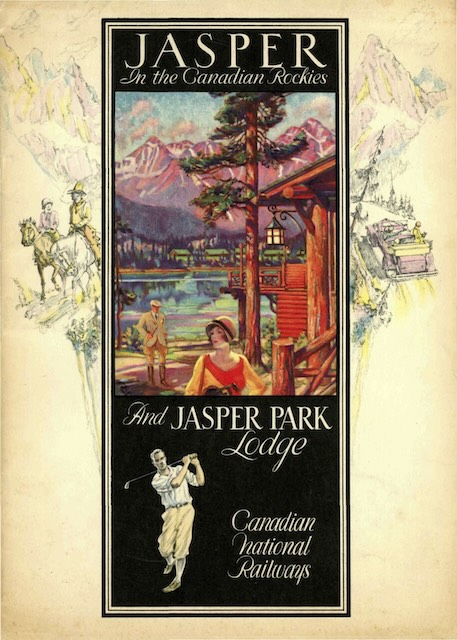We’ve previously seen a booklet with this cover from 1932. This one is from 1931 and has many of the same illustrations and similar text, though they were completely rearranged in 1932.

Click image to download a 9.9-MB PDF of this 36-page booklet.
“‘Jasper is next!’ The Confederation glides to a graceful stop,” this one opens. The 1932 edition, however, starts with a three-paragraph blurb praising Jasper written by Robert Davis of the New York Sun.
When the 1932 edition does get around to the text from 1931, it reads, “‘Jasper is next!’ The Continental Limited glides to a graceful stop.” That implies that Canadian National changed the name of its premiere train in 1932. But that’s not true: as Wikipedia notes (and the Official Railway Guide confirms), CN began operating the Continental Limited in 1920.
The Continental Limited not only stopped in Jasper, the train was divided there with some cars going to Prince Rupert while most went to Vancouver. So why did the 1931 booklet refer to a train called the Confederation?
Unfortunately, I don’t have either a CN timetable or an Official Guide from 1931. A 1926 Official Guide lists a secondary train called the National. The Continental Limited and the National were separate trains only east of Winnipeg; west of Winnipeg they were merged.
The Confederation probably began running in 1927, the 50th anniversary of the nation’s confederation. The railroad purchased its first 4-8-4 locomotives in 1927 and called them the confederation class instead of northerns. A 1930 booklet previously shown here has a photograph of a train identified as the Confederation crossing the Fraser River in British Columbia.
The remaining question is why the 1931 booklet assumes that people going to Jasper did so on the Confederation and not the Continental Limited. I suspect it may have been because the Continental Limited arrived in Jasper late at night, so people who didn’t want their sleep disturbed were encouraged to ride the Confederation. However, that train may have been cancelled due to the Depression, which would explain why the Continental Limited replaced it in the 1932 booklet.
